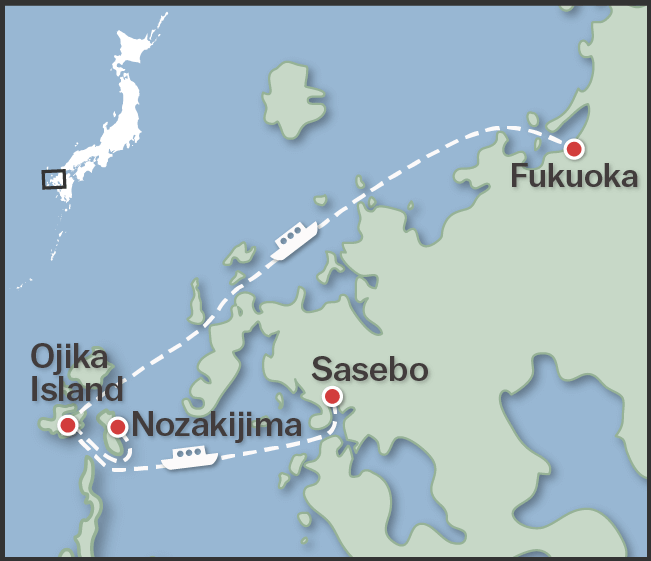Nozakijima Island
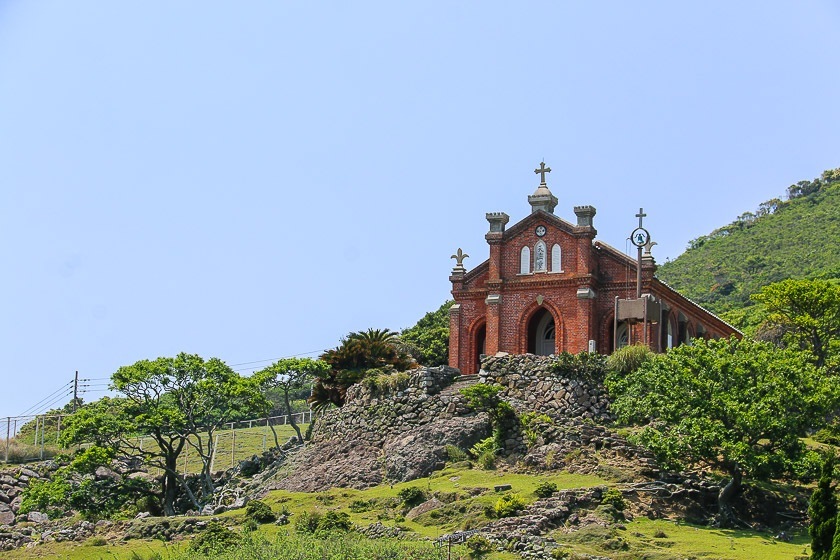
Carrying on from where I left off on Ojika Island, I made my way to Nozaki Island (Nozakijima) just 30 minutes away by ferry. Despite being closer to the main island of Kyushu, Nozakijima is definitely much more rural and backwards compared to Ojika. In fact, the island currently has a population of one (yes one!), a single truck, one vending machine and lots of ruins.

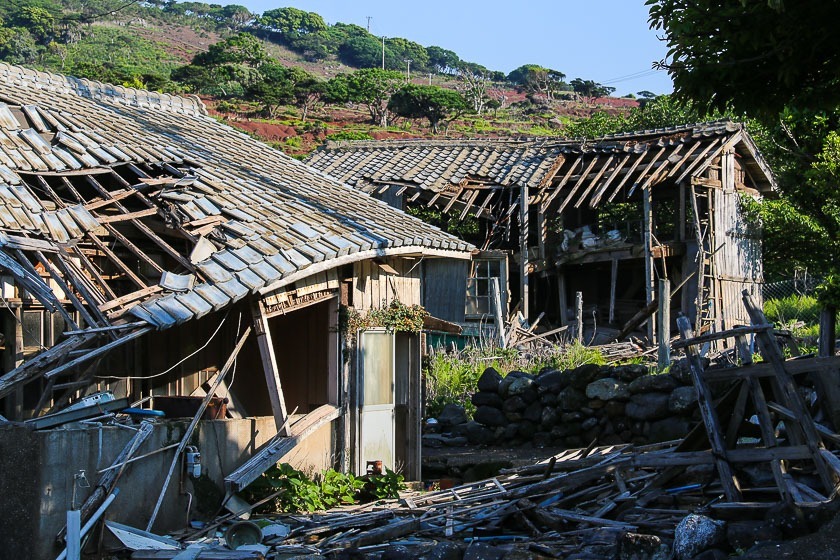

Nozakijima has almost been taken over by Mother Nature. Its wild and untamed landscape, and ruins of dwellings gave me the feeling of being in a dsytopian future. Entering the ruins is prohibited as they are private property and no one knows how stable the foundations are, so all I could do was peep in from the ouside and wondering what life was like for the people living there.
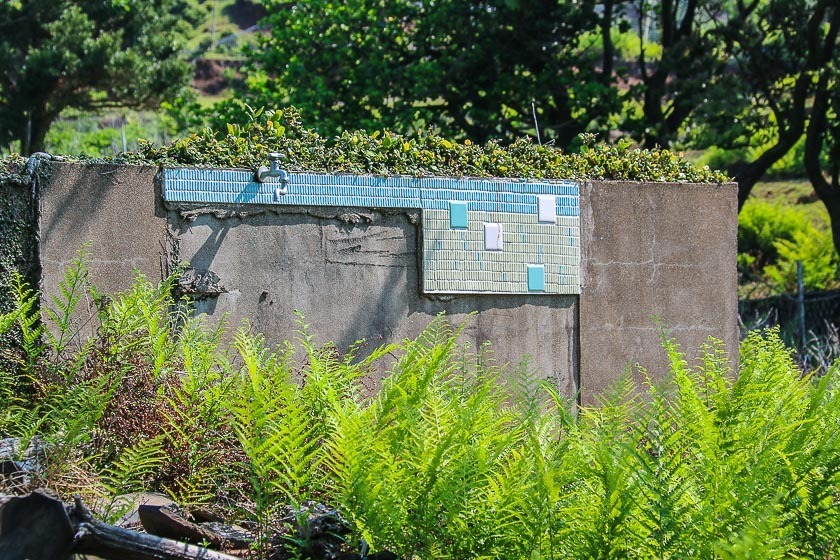
I was told before going to Nozakijima that the island holds special power and is where miracles were said to occur. Being there, I could understand the draw and fell head over heels in love with it not long after setting foot on the island. Nozakijima felt wild and desolated yet imbued with the residual feeling of longing and belonging of the people who once resided on the island. Wild boars and as many as 400 wild deer roam the island, and snakes, including some poisonous ones can be found there too.
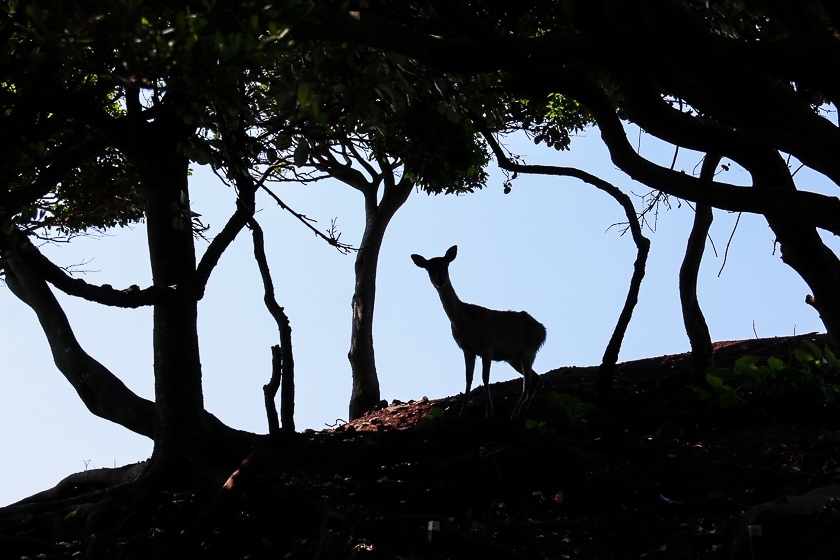
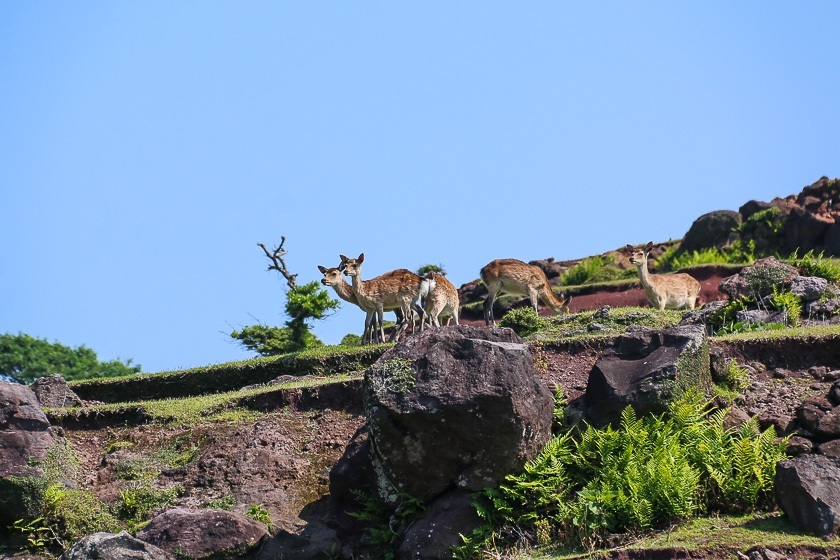

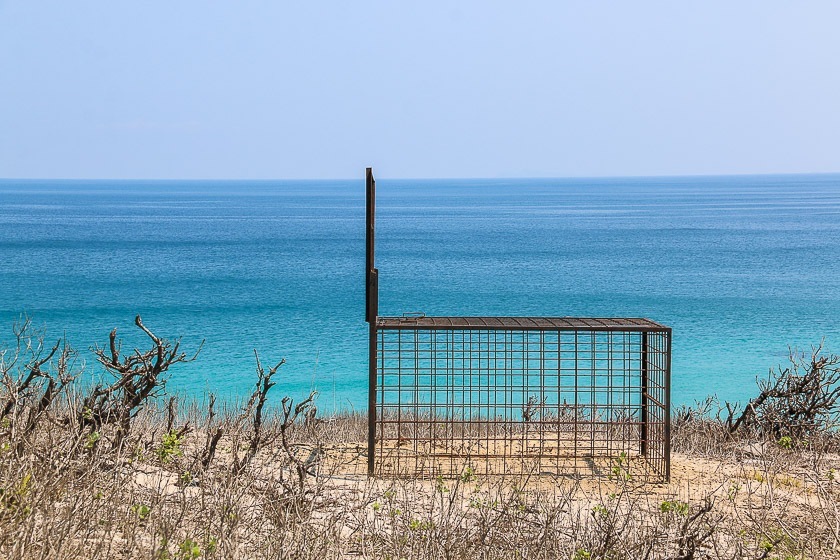
The main tourist attraction on the island is the former Nokubi Church (Kyu Nokubi Kyokai) in the middle of the island. The brick church with stained glass windows and its surrounding villages (which are in ruins) have been nominated for UNESCO World Heritage status. Completed in 1908, the former Nokubi Church was built with the sweat and tears of the Christians living on Nozakijima. In order to raise money for the construction of the church, the parish cut back on meals and sold their catch. It is said that every cent owed, which was 3000 yen then (that amount works out to be around two hundred million yen in today's currency value), was paid back in full by the time construction was finished.
The church is now open between 9:00 and 14:00 daily to visitors and those would want to enter the church will have to take the first ferry to Nozakijima. Note that photography is not permitted inside the church and shoes and hats have to be removed before entering.

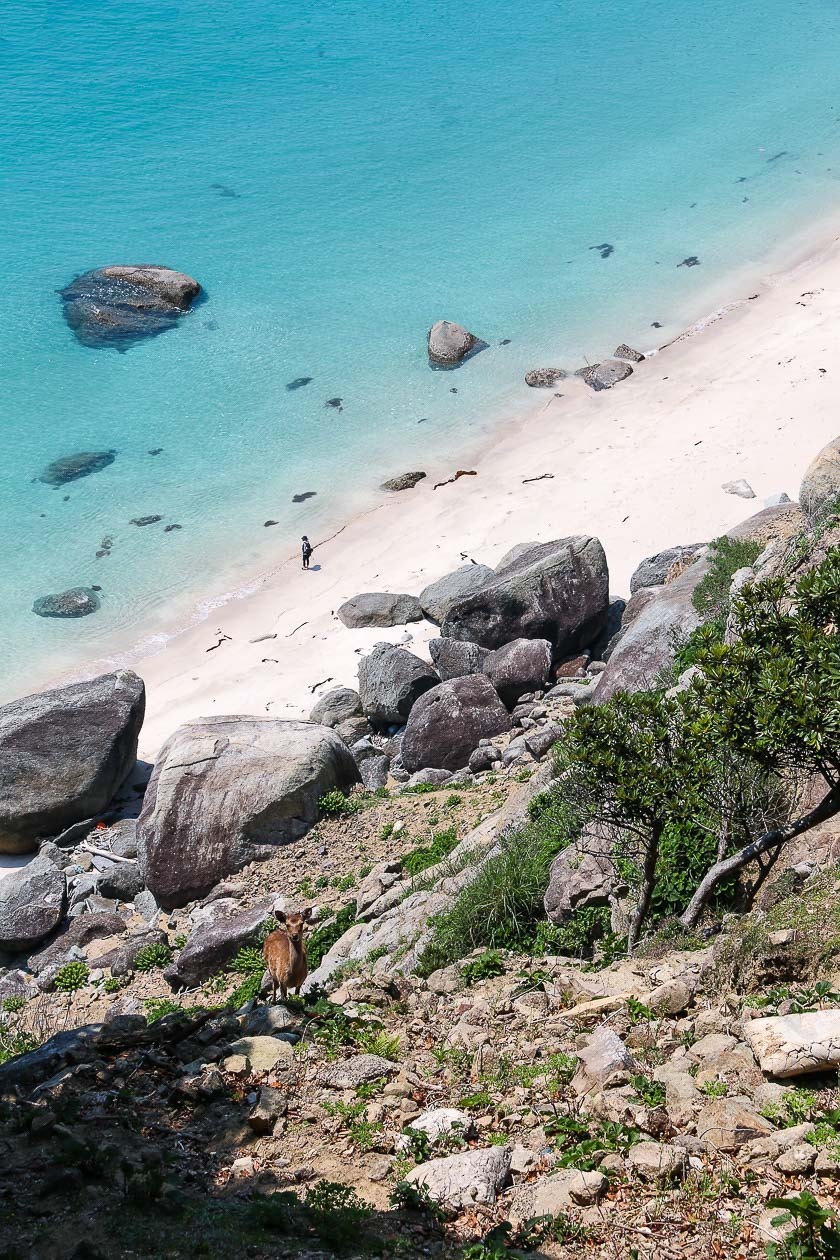

I took the morning ferry from Ojika Island for Nozakijima and arrived there about 30 minutes later. Attendance is taken and visitors are required to attend a short briefing at the visitor center before being let loose. The short briefing explains the potential dangers of the island: there are few guardrails, so look where you are going; cautions about the wild animals and reptiles, so look where you tread; do not veer off main trails; the attractions that do not require guides are the church, beach and the savannah; location of toilets; and finally a reminder for visitors to remember to take home all their rubbish.
If all you wanted was to have a general overview of the island and the church, then taking the morning boat there and coming back in the afternoon would be sufficient. It takes about 20 to 30 minutes to walk from the harbour to the church in the middle of the island, leaving for ample time to look around other parts or a splash at the beach.
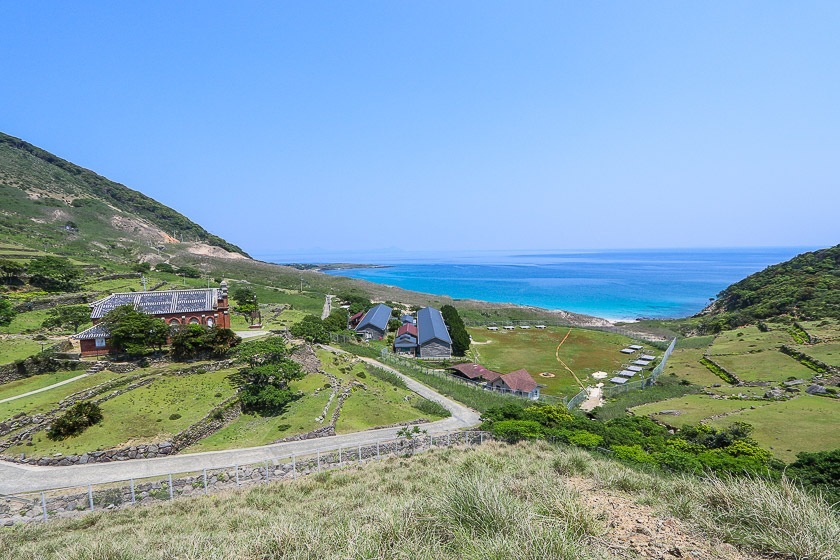
The schoolhouse offers basic accomodation and shared toilets, and is also the only other place on the island to have toilets aside from the visitor center by the harbour. The only vending machine on Nozakijima can also be found inside the schoolhouse. Visitors who are done exploring the island early can rest in the schoolhouse before the return boat arrives. Note that there are no shops nor restaurants on the island and you will have to bring your own food to Nozakijima. There is a kitchen in the schoolhouse which is available for use and a small fee is charged for those who are not staying the night.
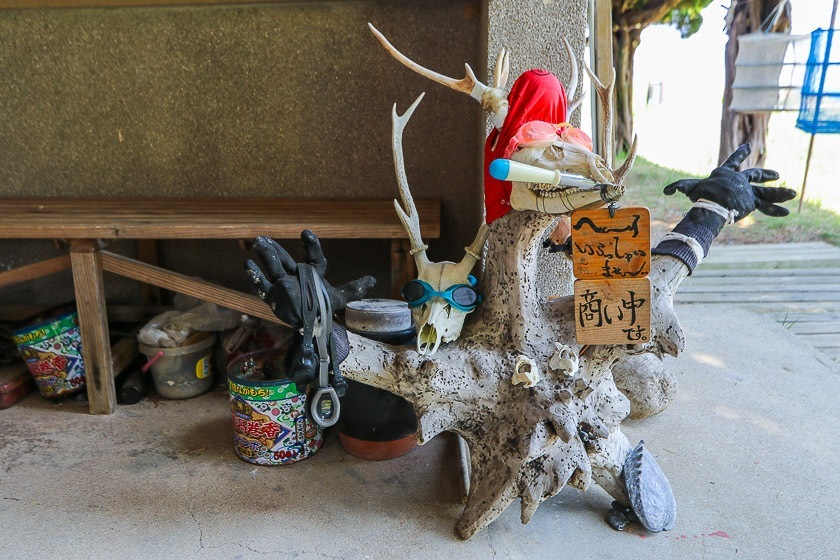
To kick off my trip to the island, I first headed to the area north of the visitor center, nicknamed the Savannah, and found myself surrounded by a vast grassland and misshapened trees. With no natural barrier against the strong coastal wind, the trees have been bent to form funny flat tops. Herds of deer can also be found there, but they are mostly wary of humans and would bound away before you even get close. I was advised not to wander too far off on my own as there are no protective railing at the edge of the savannah and there was a risk of losing my footing stepping on loose soil and rocks.
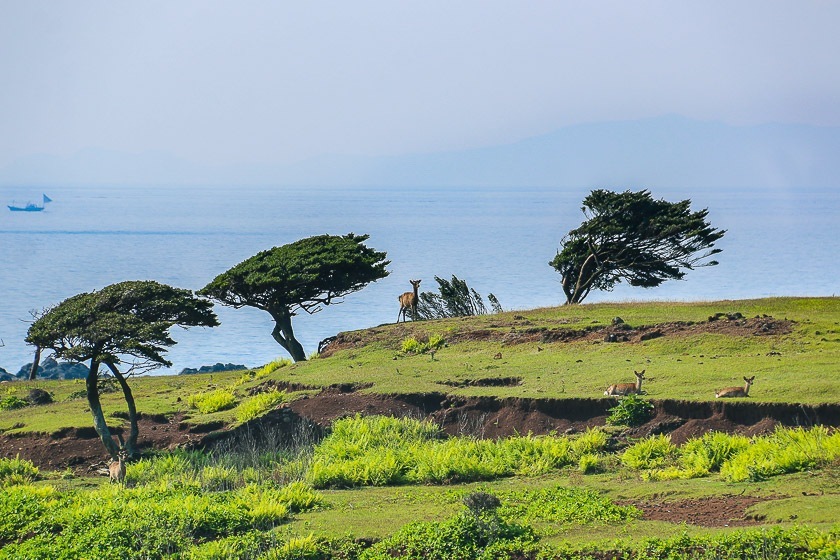
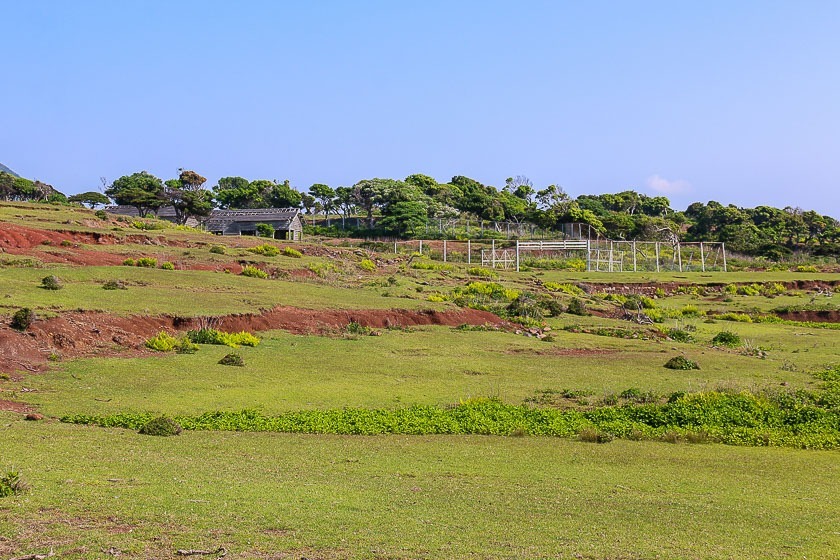

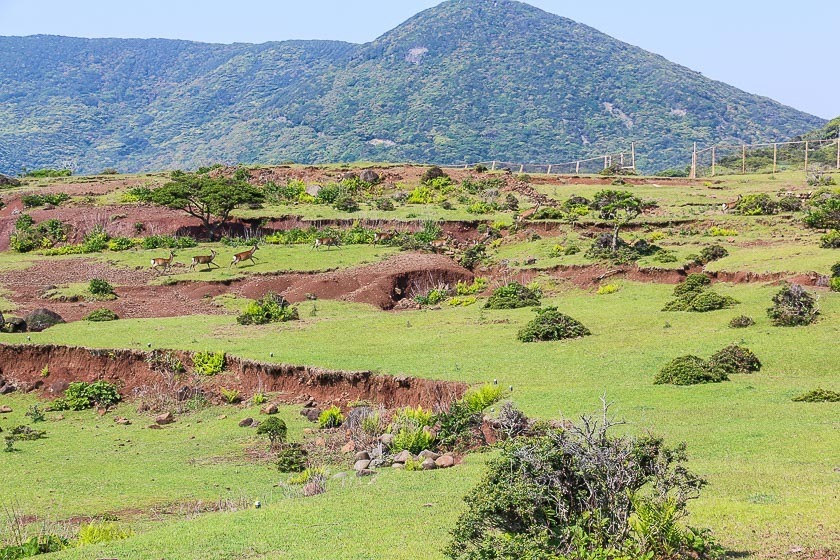
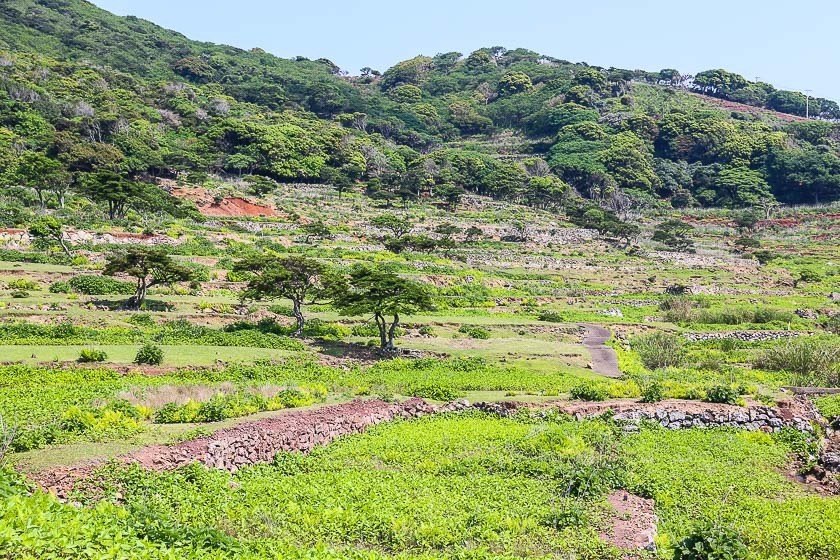
From there I headed back down and up to the church and the schoolhouse, passing by more ruins and wary deer. Transportation on the island is only by foot and it is best to wear comfortable walking shoes if you are just going to see the church, and good hiking shoes if you plan to join a guided tour further into the island. Unfortunately for me, I did not realise about the guided tour restrictions until I arrived at Nozakijima, which meant I was limited to the places I could see. But that just fueled my desire to return again.
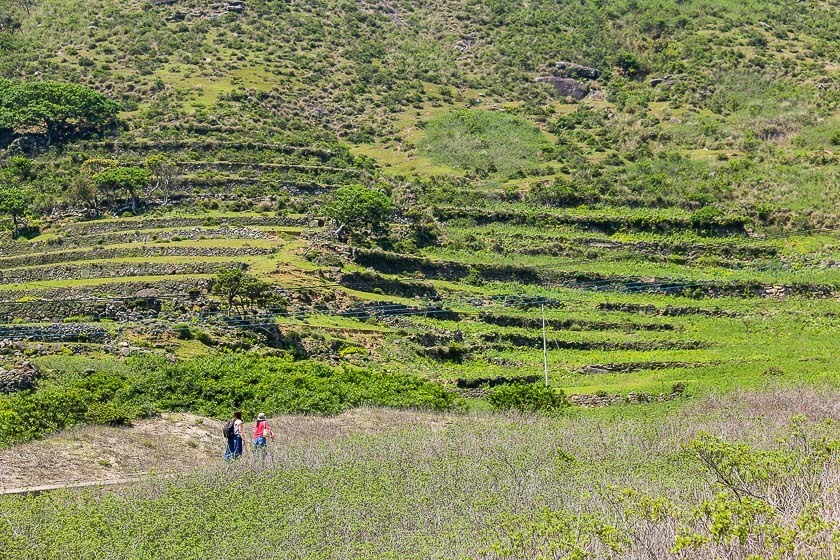
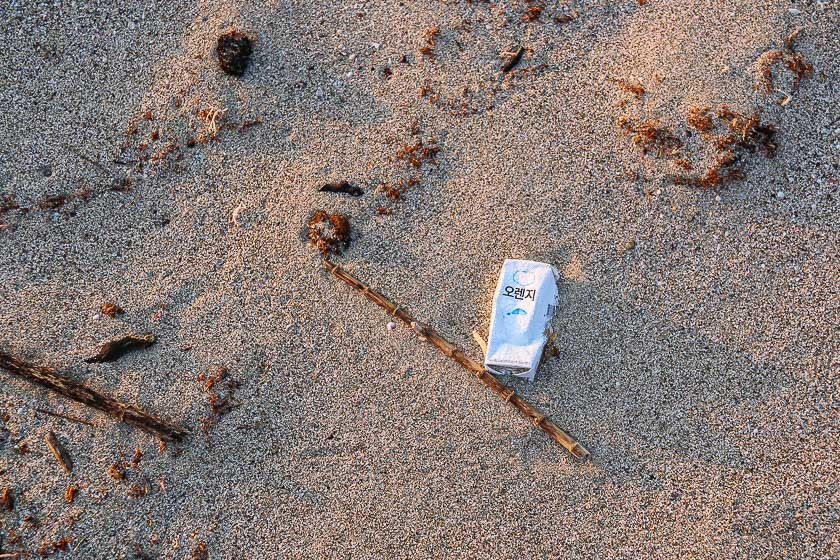

Unable to see more due to the restrictions, I made my way to the beach to cool down. The beach looked amazing when I saw from above, and it was beyond my expectations up close. The waters were unbelievablely blue and the sand was so soft. The best part of it all was I was the only person there like it was my private beach. I was advised to wear sandals into the water as there have been poisonous sealife hiding in the shallow sand and if I wanted to swim, it was at my own risk as sharks have been spotted in the nearby waters recently. So much for paradise, more like deadly paradise! But nonetheless, I went in the clear and refreshing waters with sandals on just enjoying a bit of cool on that hot day.

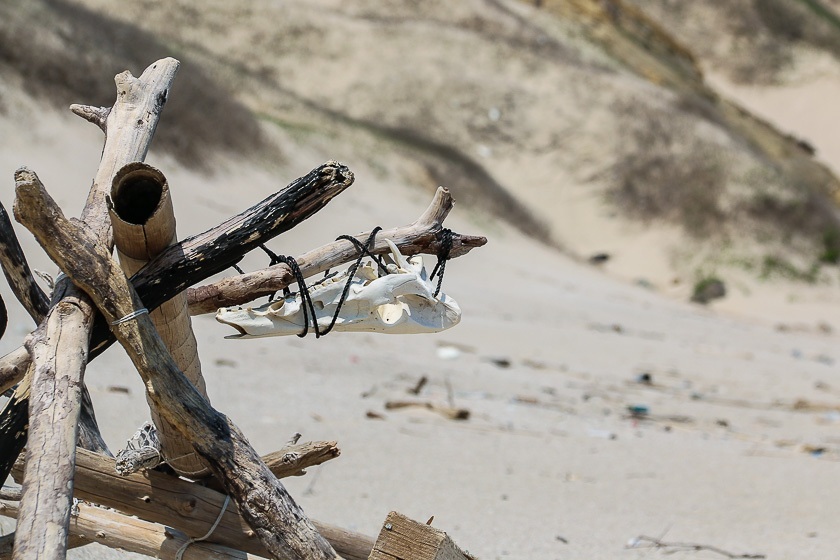
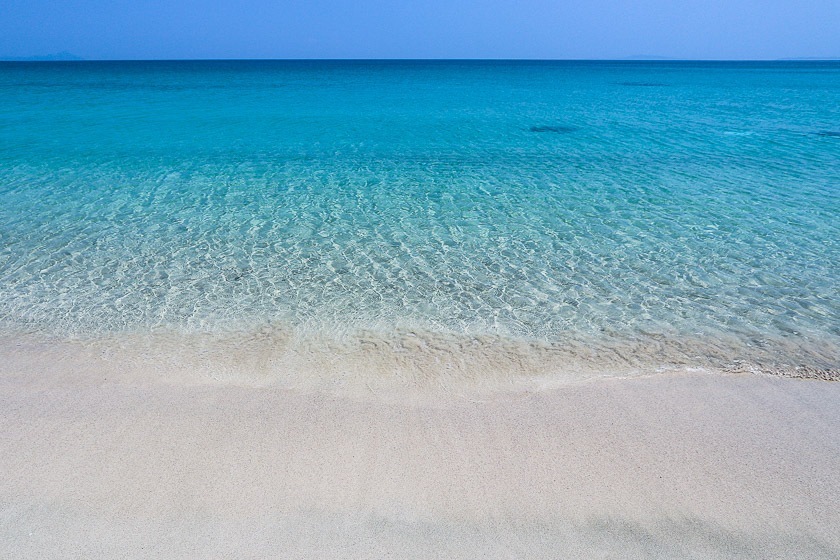
There used to be three villages on Nozakijima, and Funamori Village at the southern end had the strongest Christian presence. Today, advance reservations for a guided tour are required to go to Funamori Village to see the steep slopes on which the villagers once dwelled. It is unwise to go on your own as the trails there are not clearly marked and aggressive wild boars attack rather than flee like the deer on the island. A return journey to Funamori Village takes about four and a half hours.
Another attraction that requires advance reservations is the Okinokojima Shrine located on the tallest mountain on Nozakijima. The shrine has a long history and also has an interesting stone gate formation that makes one wonder who, when and how it was built. Like Funamori Village, access to Okinokojima Shrine is only by guided tour which takes more than five hours for a return journey.

I stayed overnight on Nozakijima to experience more of the island and would definitely recommend it. The only place to stay on the island is at the converted schoolhouse right beside the church, and reservations have to be made in advance before going to Nozakijima.
Technically a curfew of sorts, I had to be in the schoolhouse compound before it got completely dark for safety reasons. While the compound is completely fenced to prevent wild boars from entering, the sole resident of the island told me that there was still the possibility of snakes in the compound. As long as you are careful and watch where you go, the snakes do not attack. However the same can't be said for the aggressive wild boars if they see you outside the fenced compound.
The best thing about staying overnight is being able to see the sunset, the night sky and then the sunrise. There are no street lights at all on the island, and the only place that has running power is the schoolhouse. By the time it got completely dark, the sky above the island was absolutely breathtaking. Coming from the city where light pollution gets in the way of seeing lots of stars, it was simply amazing to have an entire sky of twinkling stars over my head. I also lucked out when I was there with exceptionally good weather and was treated to the best sunset and sunrise the next morning.
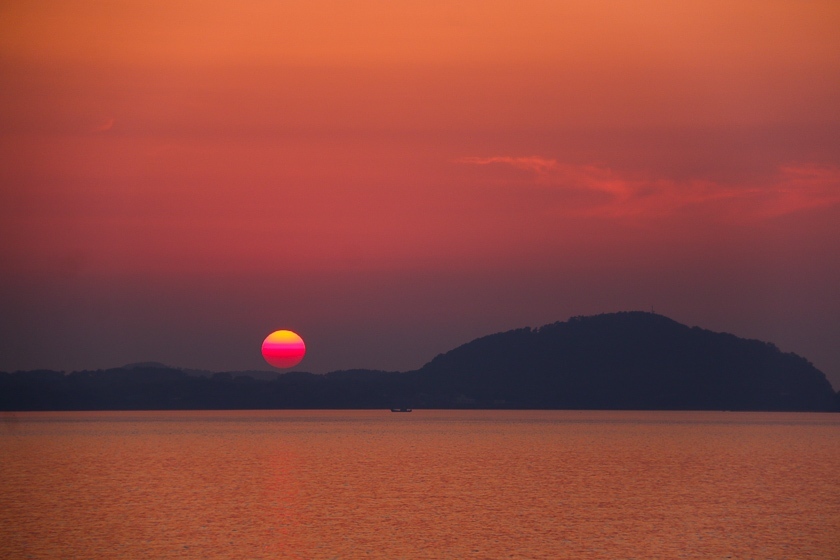
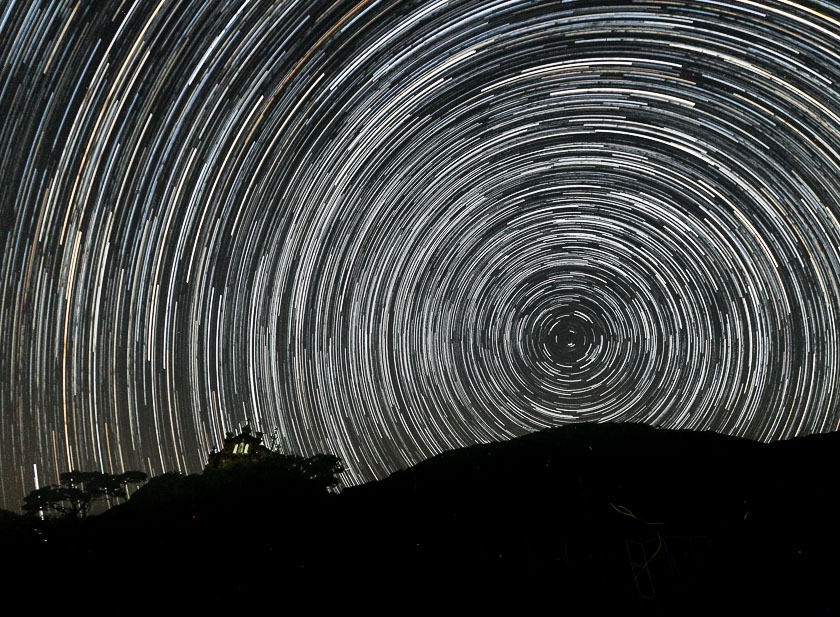
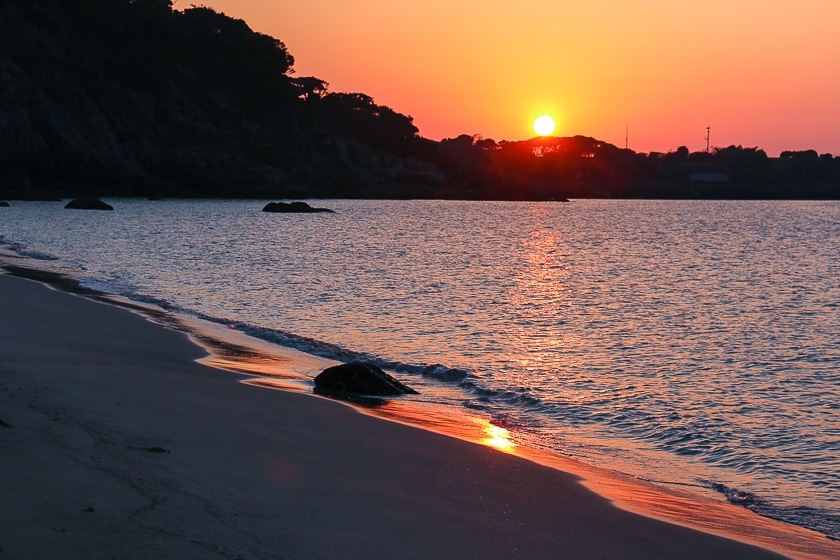
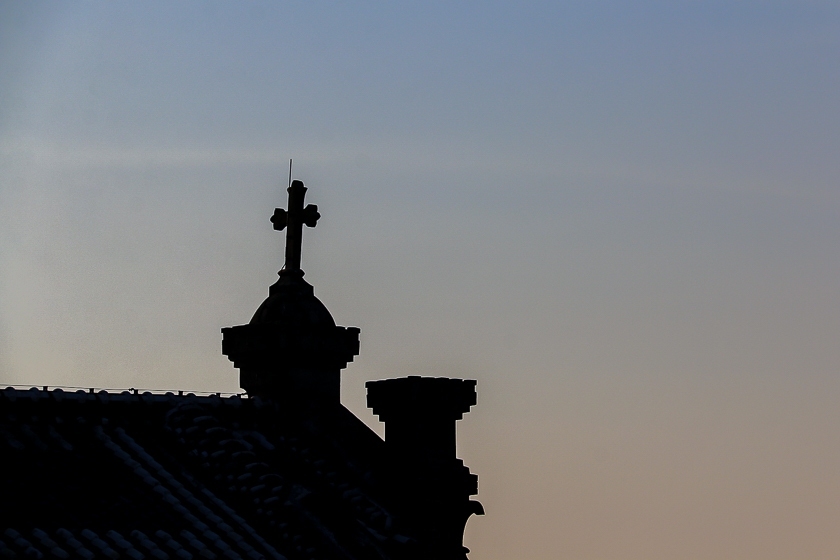
The following day, I bade farewell to the island's sole resident, promising to come back again to visit and to go to Funamori and Okinokoshima Shrine. I took the morning boat back to Ojika Island from where I caught the ferry back to Sasebo on the main island of Kyushu, ending my trip to one of the most remote places I've ever been to.



Get There
Nozaki Island can only be reached by boat from Ojika Island. There are two departures a day in either direction, the first in the morning and the second in the afternoon. The fare is paid onboard and costs 500 yen one way. Due to the remoteness of the island and to avoid being stranded on the island, visitors are required to check with the Ojika Island Tourism office (located inside the main ferry terminal) at least a week before going and again when you arrive in Ojika. Note that the boat to Ojika does not operate on a couple of days a month and in bad weather.
See this page for details on how to get to Ojika Island.
